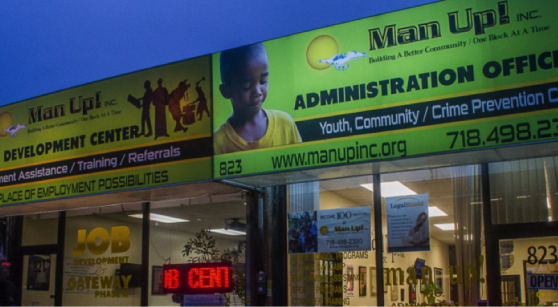A recent independent evaluation of the Cure Violence program in New York City from John Jay College of Criminal Justice Research and Evaluation Center (JJREC) found that the implementation of the Cure Violence program was associated with large reductions across several measures of violence, a shift away from norms that support violence, and a shift towards attitudes more supportive of police. The study showed that in the East New York community gun injury fell by almost 50% while only declining by 2% in the comparison area. Similarly, in the South Bronx area there was a 37% decline in gun injuries and a 63% decline in shooting victimization, with declines in 29% and 17% respectively in the comparison areas. The study also found that the young men in Cure Violence communities shifted away from social norms that support the use of violence, thought to be a key driver in the levels of violence in a community. The study also found that young men in Cure Violence communities showed an increase in confidence in police and an increase willingness to report crimes.
These findings are consistent with past independent evaluations of Cure Violence in a growing body of literature that supports the effectiveness of the Cure Violence approach. Studies by Northwestern University and Johns Hopkins University showed 41 to 73 percent reductions in shootings in neighborhoods in Chicago (Skogan et al. 2009) and as much as a 56 percent decrease in killings in Baltimore (Webster et al. 2012), while an evaluation by the Center for Court Innovations showed that the area in New York City in which the program operated went one year without a killing and had 20 percent fewer shootings compared to the trend in the neighboring communities (Picard-Fritsche and Cernaglia 2013). An evaluation of the program from 2012-2013 in Chicago found a 31% reduction in killings in the two target districts (Henry et al. 2013).
Along with evaluating levels of violence and social norms around the use of violence, the study also examined the trust and confidence in police among young men in the areas, including the willingness to report crime to the police and overall trust in the police. The results display an increased confidence in police in these areas along with the decreased support for using violence to settle personal disputes.
The New York City sites have been particularly successful as a result of the support and investment by the mayor and city council. New York City has the biggest Cure Violence budget of $22.5 million and continued support of local officials. Elizabeth Glazer, Director of the Mayor’s Office of Criminal Justice, has said “This study shows the positive impact Cure Violence programs are having, by building trust between law enforcement and New Yorkers and in reducing gun violence.”
The reductions in violence and shifts in community norms regarding the use of violence and utilization of police force are the most notable impacts of Cure Violence. In the long term, the hope is that these community norms will enhance the current resources in the area and develop a sense of community efficacy in these areas. The work of Cure Violence will need to be continuous in order for this momentum to be sustained. More reports are forthcoming to further enhance the evaluation described here.
However, in the meantime, Cure Violence has made significant strides in making these New York City communities safer, resulting in historic low levels of violence. Mayor de Blasio has made this connection clear between the work of Cure Violence and rates of violence in the city. This reduction cannot simply be done by law enforcement and an integrated health approach, like Cure Violence, is needed. “Addressing violence as a health issue is a paradigm shift that is critical not to winning an ideological battle, but to ensure that people are safe and that their children can thrive,” Health Commissioner, Dr. Mary T. Bassett has said “This report highlights promising evidence that taking a health approach to violence reduction, which has been championed by the Cure Violence program, may be capable of creating safe and healthy communities for all New Yorkers


